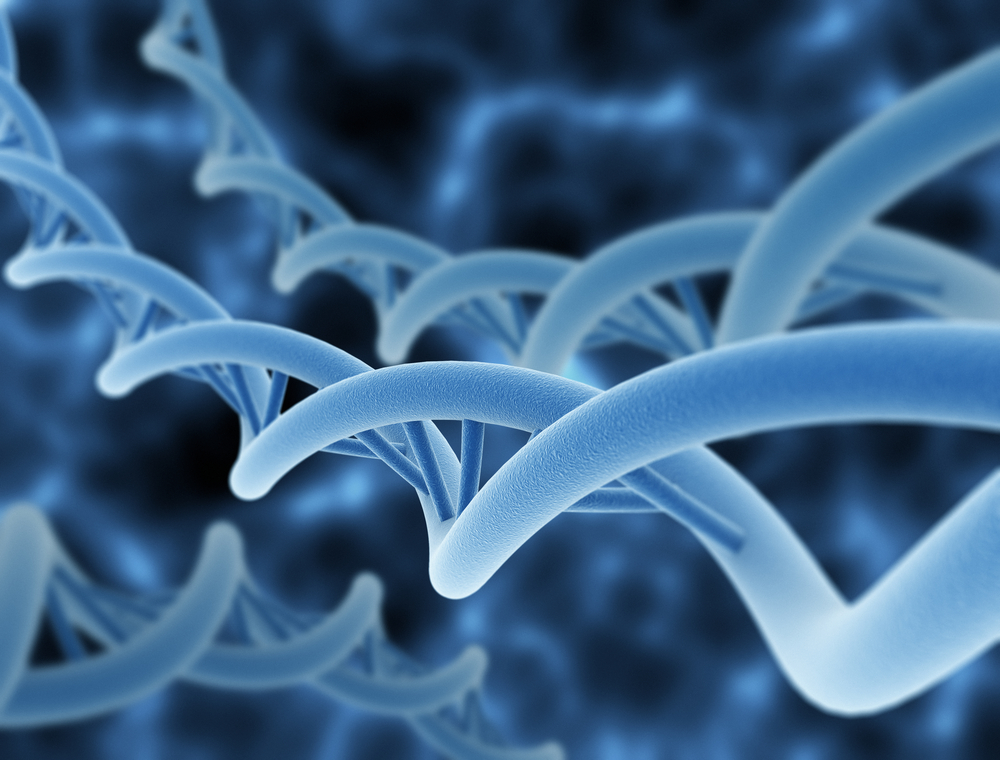Researchers Find Novel Mechanism for DNA Repair
Written by |

In a new study entitled “Novel DNA repair mechanism brings new horizons: Researchers discover new mechanism of DNA repair, which will help to treat and to prevent diseases in the future” researchers discovered a new mechanism on how the DNA molecule repairs itself which may translate into new therapeutics for several diseases, including Alzheimer’s disease. The study was published in the open access online-only journal Science Advances.
Within the different types of DNA damage that occurs in cells, single–strand breaks (SSBs) are the most common. However, cells developed a detection and repair system collectively known as the DNA damage response, for which the molecular mechanisms are not completely understood.
The DNA molecule has a length of about two meters but it is densely packed inside our microscopic cell nucleus into structures called nucleosomes, as explained by Dr. Vasily M. Studitsky, study lead author and head of the Laboratory of Regulation of Transcription and Replication at the Biological Faculty of the Lomonosov Moscow State University, “In higher organisms DNA is bound with proteins in complexes called the nucleosome. Every ~200 base pairs are organized in nucleosomes, consisting of eight histone proteins, which, like the thread on the bobbin, wound double helix of DNA, which is coiled into two supercoiled loops. Part of the surface of the DNA helix is hidden, because it interacts with histones. Our entire genome is packed this way, except for the areas, from which the information is being currently read.”
In this study, the research team led by Dr. Vasily M. Studitsky studied how single-stranded DNA breaks are detected in the DNA strand that is left in the nucleosome at the time of transcription. i.e., whenever there is the need to synthesize a specific protein, the DNA molecule is unwound and the two DNA strands are disconnected. While one strand is read (transcription) and the DNAs’ information is rewritten into RNA (which will then be processed to synthesize the protein), the other DNA strand is left “unread”. The transcription process occurs via the action of an enzyme, the RNA polymerase enzyme. This enzyme goes through the DNA molecule, like a train riding on tracks but it stops when it finds a break in the DNA molecule. It then activates a chain of reactions that culminate with the repair of the DNA break.
The results of this study revealed how cells repair DNA breaks in the DNA strand that is hidden in the nucleosome, “We have shown, not yet in the cell, but in vitro, that the repair of breaks in the other DNA chain, which is “hidden” in the nucleosome, is still possible. According to our hypothesis, it occurs due to the formation of special small DNA loops in the nucleosome, although normally DNA wounds around the histone “spool” very tightly. The loops form when the DNA is coiled back on nucleosome together with polymerase. RNA polymerase can “crawl” along the DNA loops nearly as well as on histone-free DNA regions, but when it stops near locations of the DNA breaks, it “panics”, triggering the cascade of reactions to start DNA repairs,” noted Vasily M. Studitsky.
As Vasily Studitsky concluded, these findings promise new potential therapeutic approaches to diseases that ultimately arise due to accumulation of damages in DNA, “In terms of applied science discovery of a new mechanism of reparation promises new prospective methods of prevention and treatment of diseases. We have shown that the formation of loops, which stop the polymerase, depends on its contacts with histones. If you make them more robust, it will increase the efficiency of the formation of loops and the probability of repair, which in turn will reduce the risk of disease. If these contacts are destabilized, then by using special methods of drug delivery you can program the death of the affected cells.”





